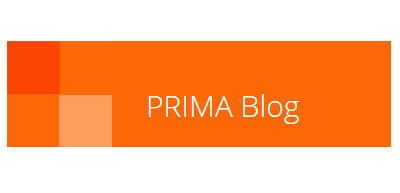In the News
2018 Workers’ Comp Issues to Watch
Mark Walls, Vice President Communications & Strategic Analysis, joined forces with Kimberly George, Senior Vice President and Senior Healthcare Adviser at Sedgwick, to identify 20 important workers’ compensation trends that should be on everyone’s radar for 2018. View the full article on Insurance Thought Leadership.
Holiday Hurry Leads to Workers’ Comp Flurry
The holiday season’s demands on the retail, packing and shipping sectors elevate workers’ compensation risks. Don Enke, Assistant Vice President – Risk Control, spoke with Business Insurance about the risks related to worker fatigue and insufficient training of seasonal workers. View the full article here.
Lives Reclaimed: Understanding the Hurdles Faced by Injured Workers
In this article, published in National Underwriter/PC 360, Mark Walls, VP of Communications & Strategic Analysis, partners with Kimberly George of Sedgwick to highlight three personal stories of injured workers who, with the right care, were empowered to achieve positive outcomes. View the full article here.
The Myth of Predictive Analytics
In his latest article with WorkCompWire, Mark Walls, Vice President of Communications & Strategic Analysis, addresses the popular topic of predictive analytics in workers’ compensation. He explains that it is not the predictive analytics, themselves, that are going to improve claims outcomes. It is how you use the predictive analytics…
Implementing Medical Marijuana into Workers’ Compensation
The medical marijuana train is coming down the tracks, so to speak. It is time for the workers’ compensation industry to begin fully understanding it, determine guidelines to control it and prepare to implement it into programs. Sherri Hickey, Assistant Vice President of Medical Management, sheds some light as to…
Demand for Impairment Training High as Employers Prep for Marijuana Law
Employers are requesting marijuana “impairment detection training” as they grapple with balancing anti-discrimination provisions in the recreational marijuana laws with their missions to maintain safe workplaces. Mark Walls, Vice President of Communications & Strategic Analysis, discussed the difficulty this is causing employers in a recent interview with Business Insurance. View the…
Opioids are Just One Pharmaceutical Issue Facing Workers’ Comp Programs
The opioid crisis receives a lot of attention, however, there are other significant pharmaceutical issues in workers’ compensation that have been getting far less attention than opioids. Sherri Hickey, Assistant Vice President – Claims, discusses this issue with WCI in their latest article, “Opioids are Just One Pharmaceutical Issue Facing…
Engagement, Good Goals Aid in Creating Safety Culture
A team environment among all levels of staff that adheres to the same safety procedures and practices must be in place in order to create a safety culture that will prevent workplace accidents and injuries. Claims Journal highlighted principles that Vik Ramaswamy, Risk Control Manager, taught in a webinar on…
Developing a Post-Injury Management Program
Workplace injuries not only cost employers money, but also have the potential to create a lot of uncertainty that negatively affects employee morale. In this PRIMA Blog post, Kevin O’Sadnick, Risk Control Manager, shares how to develop an effective program aimed at improving employee engagement and morale while reducing the…
First Impressions Matter in Comp Claims
Workers’ compensation experts say that trust in the workplace and early positive communication between injured workers and their employers or claims handlers can play a crucial role in reducing the time it takes a claimant to return to work, as well as keeping comp claim costs in check. Stephen Peacock,…
Opportunities for Treatment Guidelines
Mark Walls, Vice President of Communications & Strategic Analysis, co-authored this article on Insurance Thought Leadership from a previous Out Front Ideas with Kimberly and Mark webinar. The article stresses that understanding a jurisdiction’s strengths and shortcomings, taking a strategic approach to developing treatment guidelines, and following some common-sense tips…
2017 Issues to Watch in Workers’ Comp
Mark Walls and Kimberly George discuss their thoughts on 20 issues that the workers’ compensation industry should have on their radar for 2017 with Insurance Thought Leadership. These issues include the impact of the election, OSHA, rates and premiums and long-tail exposures to name a few. Click here to…
New Captive Services Line Hits the Market
In order to boost its product offering and provide clients across the country with a wide range of options, Safety National recently launched its latest line: captive services. To find out more about the product, its role in the modern market and why alternative risk services are so important, Insurance…
Time to Rethink Workers Compensation?
The landscape of workplace risks has experienced extreme change over the past 50 years. Experts believe that now is the time redesign workers’ compensation so that it reflects current workforce risks and is adaptable to advances in medicine and science. Industry leaders are starting to question whether the current structure…
Making the Most of the Relationship with Your Excess Carrier
Your excess workers’ compensation carrier can be a huge ally when it comes to management. The primary role of an excess carrier is to reimburse insureds for workers’ compensation benefits paid above a self-insured retention (SIR). Stephen Peacock discusses how to make the most of your relationship with your excess…
First Responder Exposure to Violence
When risk managers with emergency service personnel (firefighters and emergency medical technicians) on the payroll read through descriptions of their losses, they may find phrases such as “employee struck by patient on head, employee was hit on the arm during a struggle with patient, or employee was punched in the…
Opt-Out Movement Stalls: For Now
Participation in a state workers’ compensation plan was mandatory in every state except Texas until 2013, when Oklahoma passed legislation allowing alternatives to the mandated state system. The Employee Injury Benefit Act allowed private sector employers to create individual — but equal — plans. Mark Walls, Vice President Communications &…
The High Risk of First Responder Patient Handling
EMS and Fire Rescue is, by definition, a high-risk profession. Patients are generally getting larger, while the profession is challenged to stay physically fit. The long hours and volume of calls in some urban areas can be overwhelming for understaffed EMS districts. The profession’s educational focus on dealing with combative…
Your Mobile Workforce is Driving Up Your Exposure
Public entities have a high volume of drivers on the road. Not only do we have to guard against employees driving distracted, but we also have to consider that the general public could be distracted when driving through our work areas. Matt McDonough, Senior Risk Control Manager, explains the various…












